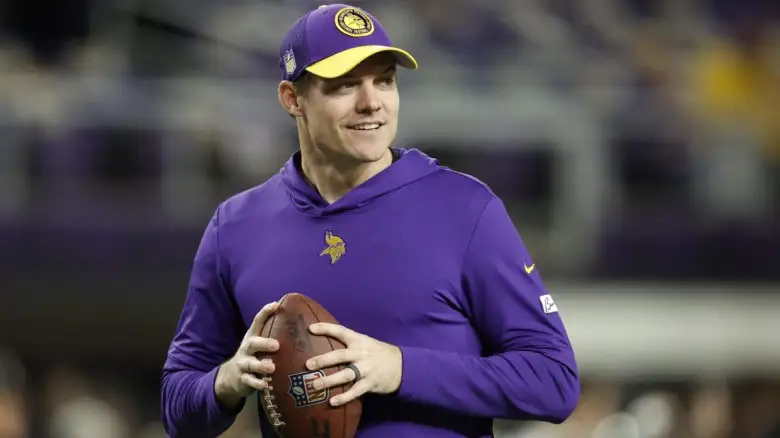
If the Minnesota Vikings find themselves unable to secure one of the top four picks in this year’s draft, they may need to explore an alternative strategy for resolving their quarterback situation. ESPN’s Mike Tannenbaum, in his March 26 mock draft, proposed a scenario where the Vikings could pursue a trade for Arizona Cardinals quarterback Kyler Murray.
Tannenbaum suggested that the Cardinals might opt to move on from Murray and select J.J. McCarthy as their fourth consecutive quarterback in the draft. His proposed solution for the Vikings involves offering their No. 11 pick in exchange for Murray and a third-round selection from Arizona.
Acknowledging the intricacies of such a deal, Tannenbaum highlighted that a straight swap of the No. 11 pick for Murray might be too steep, while offering just the No. 23 pick (Minnesota’s other first-rounder) might not suffice. Therefore, he proposes attaching a third-rounder to the No. 11 pick to balance the trade, drawing parallels to the Cardinals’ approach in the 2022 draft when they traded their first-round pick (No. 23) to Baltimore for Marquise Brown and a third-round pick.
Tannenbaum reasons that while Murray’s durability remains a concern, he presents a more cost-effective and youthful option compared to re-signing Kirk Cousins. Acquiring Murray could also provide the Vikings with an opportunity to stay competitive in the upcoming season rather than embarking on a full-scale rebuild.
Vikings’ Ship Has Likely Already Sailed Past Cardinals’ Kyler Murray
While Tannenbaum’s suggestion regarding the Vikings’ potential quarterback shift if they miss out on the top four picks holds merit, the financial implications of acquiring Kyler Murray may prove too burdensome for Minnesota.
Murray’s contract, inked in 2022, stands as the fifth-largest quarterback deal in the NFL, totaling $230.5 million over five years. The initial cost-effective years of Murray’s contract have elapsed, significantly increasing the financial commitment for any acquiring team.

A trade before June 1 would saddle the Cardinals with a staggering $46.2 million in dead cap space, setting a record for the highest dead cap hit incurred by a team moving on from a veteran quarterback contract. Additionally, Murray boasts $113 million in full guarantees over the next three seasons, mirroring the kind of financial entanglement the Vikings aimed to avoid in their negotiations with Kirk Cousins.
Despite Murray’s pedigree as the former top overall pick in 2018, along with his accolades as Offensive Rookie of the Year and two-time Pro Bowl selection, the notion of trading him has been dismissed by some league executives due to the perceived untradability and problematic nature of his contract. However, if the Vikings believe they possess a roster primed for immediate success, they may contemplate maneuvers to accommodate Murray’s contract for a limited duration.
Yet, it appears unlikely that such a scenario aligns with the philosophy of general manager Kwesi Adofo-Mensah, who seems inclined to steer clear of replicating the aggressive spending tactics of teams like the Rams.
Vikings Are Building a Long-Term Contender, Not a Dark Horse
For years, the Vikings have lingered on the outskirts of championship contention, often seen as a team capable of springing surprises in the playoffs.
In 2022, Minnesota demonstrated remarkable resilience by winning all 11 one-score games during the regular season, culminating in an impressive 13-4 record. This success underscored the culture instilled by Kevin O’Connell in his inaugural year as head coach.

However, relying solely on an underdog mentality has its limitations, as evidenced by the Vikings’ early exit from the NFC playoffs, where they succumbed to the New York Giants by a mere seven points.
The Giants, in turn, were swiftly dispatched by the Super Bowl-bound Philadelphia Eagles, a team boasting a roster teeming with top-tier talent, particularly surrounding quarterback Jalen Hurts, who was still on his rookie contract.
Throughout the Kirk Cousins era, the Vikings struggled to put opponents away early, partly due to roster attrition following the 2019 season and a scarcity of cap space to secure key free agents.
Now, with the potential of acquiring a cost-effective rookie quarterback capable of ascending to Pro Bowl status, the Vikings envision a future where they can capitalize on such opportunities in the years ahead.
Leave a Reply